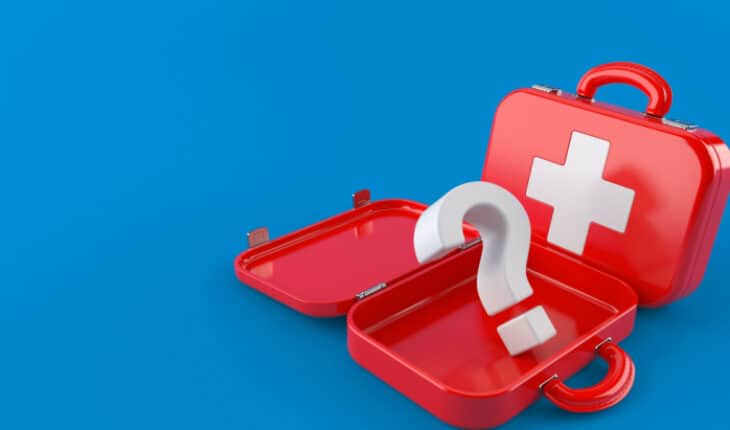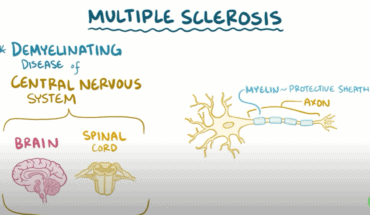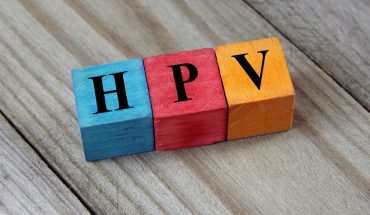Twelve First Aid myths debunked! Being confident in your First Aid knowledge is important to know how to help in a medical emergency and to avoid unnecessary trips to the hospital. However, information on the internet and hearsay advice can be misleading and has led to many first aid myths.
In this article we discuss and debunk 12 common first aid myths and explain the right approach.
1. Defibrillators are complicated to use.
This myth is serious since it can cost lives. In reality, defibrillators are very easy to use and you do not have to be specifically trained to use one. AEDs (defibrillators) speak to you and take you step by step through what you need to do to help save someone’s life and they give people the best possible chance of survival. If you can get the pads onto the patient’s chest within 3 minutes and administer a shock, the chances of survival soar from around 6% to 74%. This drops by 10% for every minute’s delay in using the machine.
In addition, a defibrillator will not allow you to shock them if the casualty does not need it! Therefore, you can’t do anything wrong and using a defibrillator will not do any harm. So apply the pads, switch on the machine, and it will talk you through what to do. However, you do need to use a defibrillator alongside giving quality CPR. It is the CPR that pumps oxygenated blood to the casualty’s heart and brain – if this doesn’t happen, they will not survive.
Click here to learn more about defibrillators.
2. Tilt the head back if someone has a nosebleed.
Some people believe this myth comes from people trying to avoid getting blood on the floor when having a nosebleed. The correct First Aid for a nose bleed is to sit the individual down and get them to lean forward, pinching the bleeding blood vessel against the inside of the nose to stop the blood coming out.
Leaning forward whilst applying pressure to the nose will allow you to see when the bleeding has stopped and will avoid the blood trickling down the back of their throat which could make them sick. You should apply pressure and try to compress the leaking blood vessel against the inside of the nose to stop it bleeding. Keep changing your grip until you have got to a point where no blood is coming out and apply pressure for at least 10 minutes. Release pressure slightly and if it starts to bleed again hold for another 10 minutes. Repeat this for up to 3 times before seeking additional medical advice. If you cannot control the bleeding with pressure and there is continuous heavy bleeding – you should seek medical help.
3. If someone swallows something toxic or corrosive.
It’s a common myth that the best way to treat ingested poison is to make someone sick. It is important to remain calm and to not induce vomiting as if they have swallowed a corrosive substance that will burn the throat again as the corrosive product comes back up.
Instead, you should wipe any visible substances away from their face or hands. If you think they have swallowed a corrosive substance you should phone an ambulance whilst encouraging the individual to swill milk or water around their mouth and spit this out. You can also give them small sips of milk or water to dilute the product down their throat.
Please click the link for more information about what to do if someone has swallowed dishwasher tablets, or liquitabs.
Button batteries can also be dangerous – please click here for more information on how to help if someone has swallowed a button battery.
4. If someone has a deep wound, you should remove anything embedded in it.
If an object is embedded in the wound it is likely to be stemming some of the bleeding. Removing the object could also result in further trauma as you cause additional damage trying to remove it.
Ideally sit or lay the casualty down in the most appropriate position for the location of the wound and the amount of blood lost. If they are feeling dizzy and showing early signs of shock, raise their legs. Elevating the bleeding area above the level of the heart is likely to slow down the bleeding. Please note that latest guidelines no longer recommend elevation, but this is just because elevation alone will not stop bleeding and pressure is more important. Apply direct pressure on the wound to stop the blood coming out. Keep holding for 10 minutes to give time for clots to form. Once bleeding is controlled, dress the wound. If the wound bleeds through the first dressing, apply another on top. Then, if the wound bleeds through the second dressing you should remove the dressings and ensure you are applying pressure directly to the source of the wound. If there is extremely heavy bleeding that you are unable to control with direct pressure, you may need to use other measures such as packing a wound or possibly using a tourniquet. Learn more here.
5. Use a paper bag to help someone hyperventilating.
People used to think breathing in and out of a paper bag was helpful during a panic attack, and the physiology makes sense; breathing out in panic results in the loss of carbon dioxide in the blood and breathing into a bag restores the lost CO2. However this is no longer recommended.
However, it can be dangerous to use a paper bag when someone is having an asthma attack and can make things considerably worse.
If someone is suffering repeated panic attacks and they are persistent and severe, the patient can be referred for specialist help. Read this article for more information on helping those suffering with panic attacks.
6. You should apply ice to a burn.
Applying ice to a burn is a myth that can cause further damage to the tissue. You should put the burn under cool running water for 20 minutes. This will help significantly reduce tissue damage, hasten wound re-epithelialisation (healing) and reduce scarring.
If you can, remove loose clothing and jewellery from the casualty, however it is very important not to remove anything stuck to the burn. Finally, you should loosely cover the burn in cling film to keep the burn moist, clean and prevent infection, this reduces the chance of scarring.
Please don’t apply anything other than a proper burn dressing to a burn. Never apply butter, toothpaste, potatoes or anything else to a burn.
7. Wrap up warm and sweat out a fever.
It is quite common for people to spike a raised temperature. Raised temperatures are usually caused by viral or bacterial infections. Please be aware that the person you are caring for could have a contagious illness. Therefore, take additional steps to ensure you do not put yourself at risk of catching it.
Do:
- open windows and allow air to circulate, but don’t leave them in a draft or let them get cold
- give them plenty of fluids
- look out for signs of dehydration
- give them small portions of easily digested food if they feel up to eating it
- check on them regularly and during the night
- give paracetamol if they are in pain. This will also help reduce their fever.
- get medical advice if you’re worried that they are getting worse, or the fever is not shifting within 3 or 4 days
- Give them a cool damp flannel that they may find soothing to wipe across their forehead and wrists.
Things to avoid:
- don’t undress your child or overly sponge them down to cool them – fever is a natural and healthy response to infection. However, as mentioned above, some people find a cool flannel on their forehead or pulse points is soothing and this can help to reduce the fever.
- avoid covering up in loads of clothes or bedclothes – it is not good to sweat out a fever. Better to wear light cotton nightclothes. Open a window to circulate the air, but don’t sit in a draft.
- never give aspirin to under-16s
- it is not a good idea to combine ibuprofen and paracetamol, unless a GP tells you to
- refrain from giving paracetamol to a child under 2 months
- avoid giving ibuprofen to someone with Coronavirus, chicken pox or shingles as it could make things worse
- When someone has a raised temperature it can lead to seizures known as febrile convulsions. See these tips on how to treat a fever.
8. Put something in someone’s mouth if they are having a seizure.
Never put something in someone’s mouth if they are having a seizure. This myth can damage their teeth and cause trauma to their mouth.
It is common for someone having a seizure to bite down on their tongue and this can cause bleeding and they may have blood stained saliva. However any damage to their tongue is likely to heal fast.
Putting something in the patient’s mouth can be dangerous and cause long term trauma.
9. Put someone’s head between their knees if they are fainting.
Advising someone to put their head between their knees can lead the patient to fall forwards and cause more damage.
Instead lie them on their back and elevate their legs to help increase the blood flow to their heart and brain. Then, make sure you monitor their airways and breathing. If they become unconscious and are breathing, but do not come round quickly, you should roll them into the recovery position. If they stop breathing, be ready to perform CPR. We teach the recovery position and CPR on all our first aid courses.
10. You should urinate on a jellyfish sting.
It has often been advised to urinate on a jellyfish sting. However, vinegar is a far better treatment if it is available. Some beach resorts and lifeguards will have vinegar ready for you to use.
Instead soak the area in hot water after rinsing with salt water. If you’re in noticeable pain feel free to take ibuprofen or paracetamol to help quell the pain.
For more information on jellyfish and sea urchin injuries please click here
11. You should always use the Heimlich manoeuvre if someone is choking.
The Heimlich manoeuvre (or abdominal thrust) shouldn’t be your first course of action, this is actually a myth. It is a second line treatment. First line treatment should always be back blows as this can quickly dislodge the object without causing any damage.
Firstly stay calm and ask them to cough to try and remove the object themselves.
If not successful, bend them forward supporting their chest with your hand. You may find it easier to lay children across your lap.
Use the flat of your other hand to give a sharp back blow between the shoulder blades.
Check to see the obstruction is cleared before giving another back blow. Give back blows in groups of five before checking to see if the blockage has gone.
If the back blows haven’t worked, get an ambulance on the way.
Then try abdominal thrusts. Stand behind the person choking and place one hand in a fist under their rib cage. Use the other hand to pull up and under, to dislodge the obstruction. Think of it as a J-shaped motion to pull up and under their rib cage.
Perform abdominal thrusts up to 5 times, checking each time to see if the obstruction has cleared.
If the person is still choking, call 999 (or 112) and alternate five back blows and five abdominal thrusts until emergency help arrives.
If at any point the person becomes unconscious, start CPR.
12. Ask someone to cough if they’re having a heart attack.
There is no medical evidence that supports the idea of “cough CPR”. This is a myth.
If you suspect that someone is having a heart attack then you should help them to sit in the lazy W position and call 999 . Don’t believe the myth about coughing – it doesn’t work and could waste valuable time. Help them to take a 300mg Aspirin if that has been prescribed for them and be ready to give CPR if they lose consciousness.
Read our article about how to deal with heart attacks on your own and how to help someone having a heart attack.
- Heart Attacks and Cardiac Arrests – What’s the Difference? - 22nd October 2024
- High blood pressure and how to reduce it - 8th September 2024
- Strokes: How to spot them and what to do - 8th September 2024






